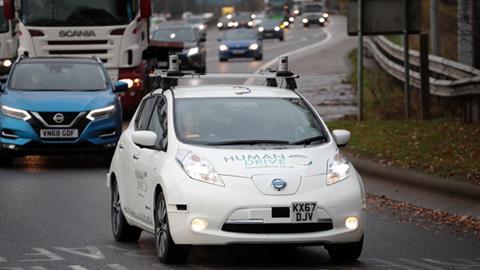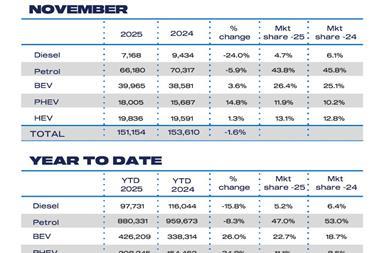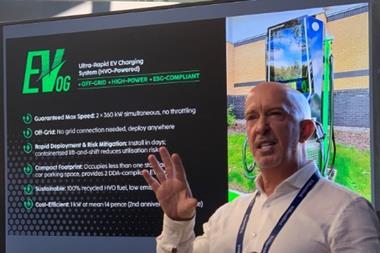
The introduction of self-driving cars on UK roads has come a step closer with the government announcing it will update the Highway Code to take account of them.
The changes, responding to a public consultation, explain that while travelling in self-driving mode motorists must be ready to resume control if they are prompted to – such as when they approach motorway exits.
The plans also include a change to current regulation, allowing drivers to view content that is not related to driving on built-in display screens, while the self-driving vehicle is in control. It will, however, still be illegal to use mobile phones in self-driving mode.
According to the Department for Transport, Britain’s first vehicles approved for self-driving could be ready for use later this year, and the government is continuing to develop a full legal framework for their use.
Transport minister Trudy Harrison said: “This is a major milestone in our safe introduction of self-driving vehicles, which will revolutionise the way we travel, making our future journeys greener, safer and more reliable.
“This exciting technology is developing at pace right here in Great Britain and we’re ensuring we have strong foundations in place for drivers when it takes to our roads.
“In doing so, we can help improve travel for all while boosting economic growth across the nation and securing Britain’s place as a global science superpower.”
The introduction of the technology is likely to begin with vehicles travelling at slow speeds on motorways, such as in congested traffic.
Following a landmark call for evidence, the government announced in April last year that vehicles fitted with automated lane keeping system (ALKS) technology could be the first example of self-driving technology. Existing technology available on the market is assistive, meaning drivers must always remain in control and responsible.
Designed for use on a motorway in slow traffic, ALKS enables a vehicle to drive itself in a single lane, up to 37 mph, while maintaining the ability to return control easily and safely to the driver when required.
Meanwhile, the government expects to have a full regulatory framework in place to support the widespread deployment of the technology by 2025.
Steve Gooding, director of the RAC Foundation, said: “The Highway Code has been updated a number of times in recent years to reflect the rapidly changing transport world we live in and these latest additions will help us all understand what we must and must not do as we move forward to an environment where cars drive themselves.
“The final part of the jigsaw is to ensure these amendments are widely communicated to, and understood by, vehicle owners. Vehicle manufacturers and sellers will have a vital role to play in ensuring their customers fully appreciate the capabilities of the cars they buy and the rules that govern them.”
Mike Hawes, chief executive of the Society of Motor Manufacturers and Traders (SMMT), said: “Amending The Highway Code to reflect the pace of technological change will help clarify what motorists can and can’t do when a self-driving feature is engaged, so promoting its safe use.
“The technology could be available in the UK later this year and, with the right regulations in place, consumers are set to benefit from safer, more efficient journeys while the UK will strengthen its position as a global leader in the deployment of self-driving technology.”

































No comments yet